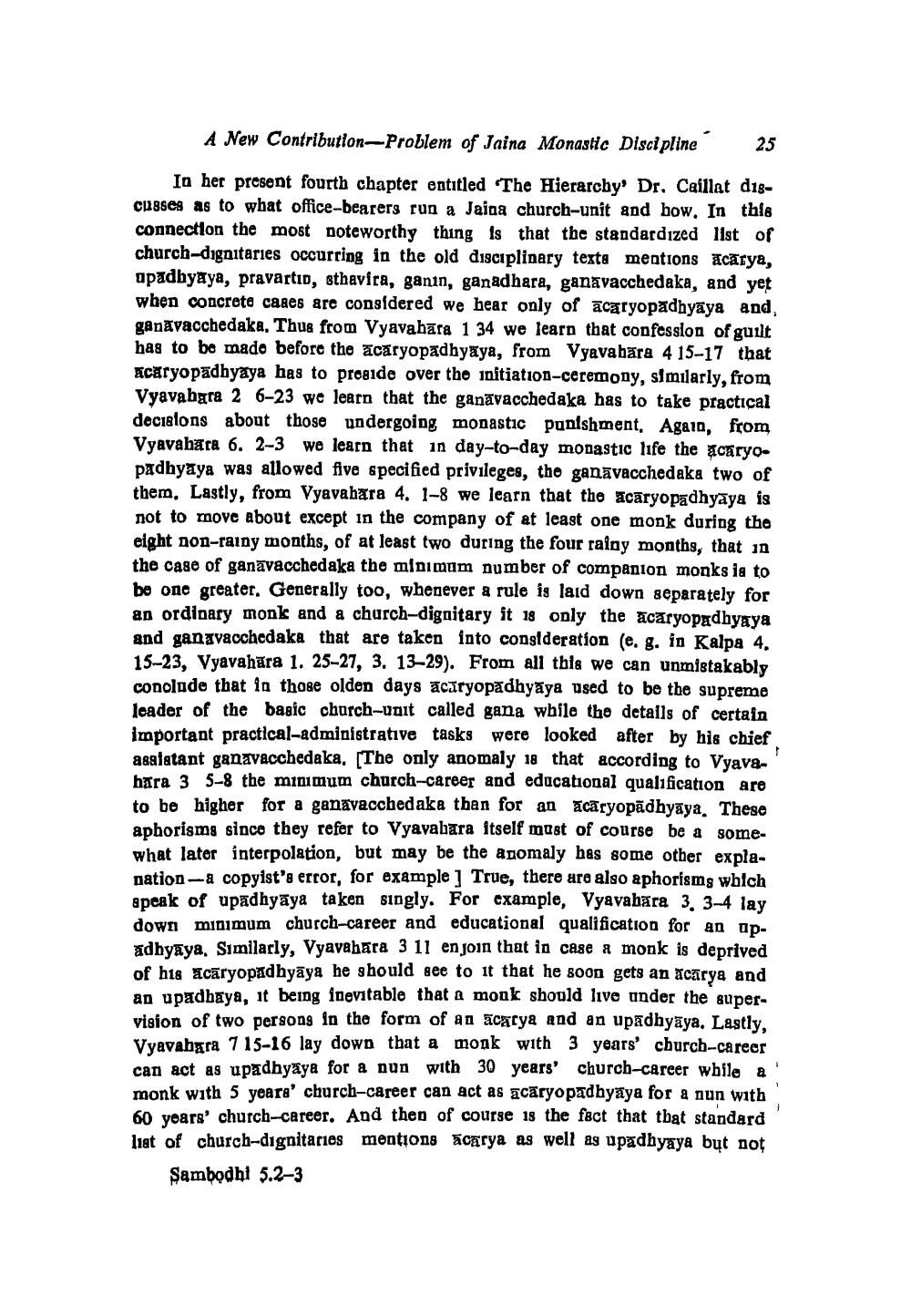________________
A New Contribution-Problem of Jaina Monastic Discipline
25
In her present fourth chapter entitled The Hierarchy' Dr, Caillat d18cusses as to what office-bearers run a Jaina church-unit and how. In this connection the most noteworthy thing is that the standardized list of church-dignitaries occurring in the old disciplinary texta mentions acārya, apadhyaya, pravartio, sthavira, ganun, ganadhara, ganavacchedaka, and yet when concrete cases are considered we hear only of acaryopadhyāya and, gan vacchedaka. Thus from Vyavahāra 1 34 we learn that confession of guilt has to be mado before the acaryopadhyaya, from Vyavabāra 4 15-17 that acaryopadhyaya has to proside over the initiation-ceremony, similarly, from Vyavabara 26-23 we learn that the ganāvacchedaka has to take practical decisions about those undergoing monastic punishment. Again, from Vyavahara 6. 2-3 we learn that in day-to-day monastic life the caryopadhyaya was allowed five specified privileges, the ganavacchedaka two of them, Lastly, from Vyavahara 4. 1-8 we learn that the acāryopadhyāya is not to move about except in the company of at least one monk during the eight aon-rainy months, of at least two during the four rainy months, that in the case of ganāvacchedaka the minimum number of companion monks ia to be one greater, Generally too, whenever a rule is laid down separately for an ordinary monk and a church-dignitary it 18 only the acaryopadhyaya and qanavacchedaka that are taken into consideration (e. g. in Kalpa 4. 15-23, Vyavahāra 1. 25-27, 3. 13-29). From all this we can unmistakably conolude that in those olden days acaryopadhyāya used to be the supreme leader of the basic church-unit called gana while the details of certain important practical-administrative tasks were looked after by his chief agalatant ganavacchedaka. [The only anomaly 18 that according to Vyava. hara 3 5-8 the minimum church-career and educational qualification are to be higher for a ganavacchedaka than for an acaryopadhyaya. These aphorismg since they refer to Vyavabara itself most of course be a somewhat later interpolation, but may be the anomaly has some other explanation-a copyist's error, for example ] True, there are also aphorismg which apeak of upadhyāya taken singly. For example, Vyavahāra 3, 3-4 lay down minimum church-career and educational qualification for an apadhyaya, Similarly, Vyavabara 3 11 en join that in case a monk is deprived of his caryopadhyāya he should see to it that he soon gets an acarya and an upadbaya, it being inevitable that a monk should live under the supervision of two persons in the form of an acacya and an upadhyaya. Lastly. Vyavabara 7 15-16 lay down that a monk with 3 years' church-career can act as upadhyaya for a nun with 30 years' church-career while a monk with 5 years' church-career can act as acāryopadhyaya for a nun with 60 years' church-career. And then of course is the fact that that standard liat of church-dignitaries mentions acarya as well as upadhyaya but not
Sambodhi 5.2–3
Vabara 7 15-10 tea for a nun can act as acary




